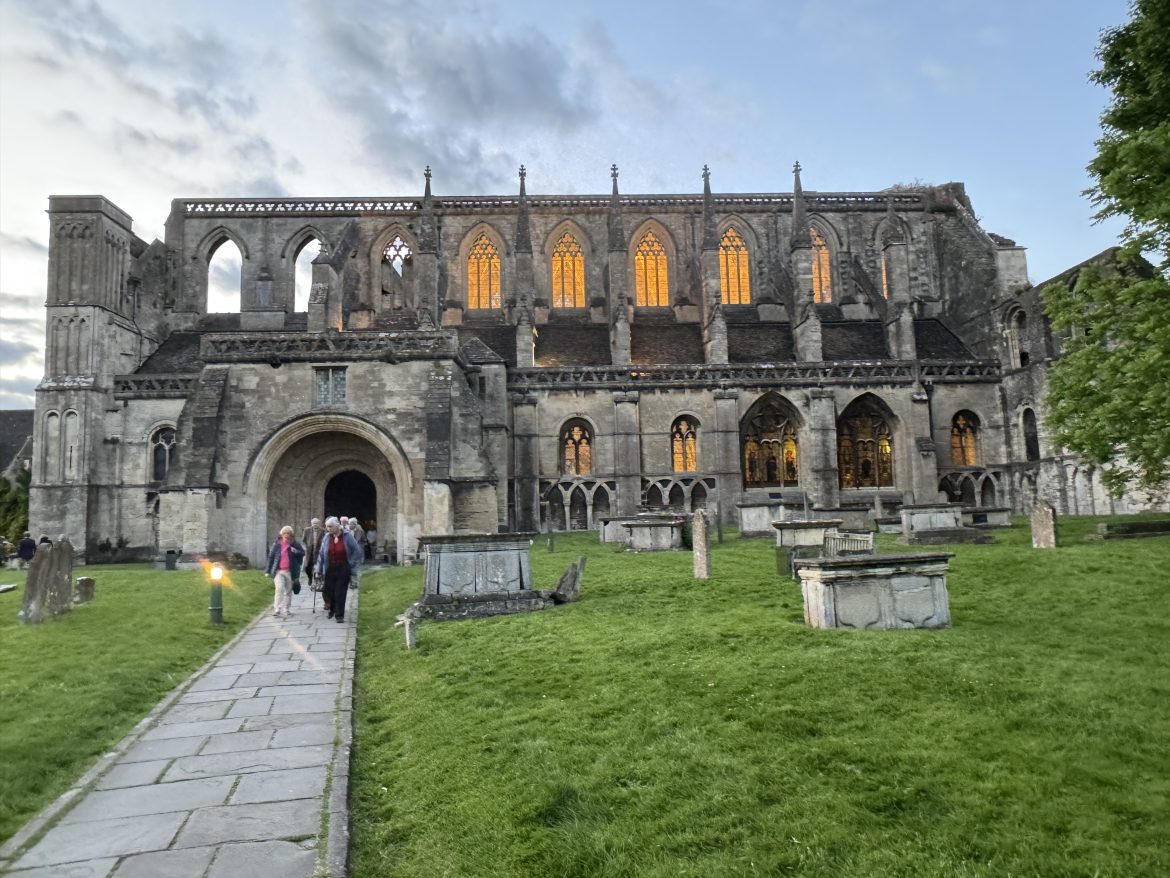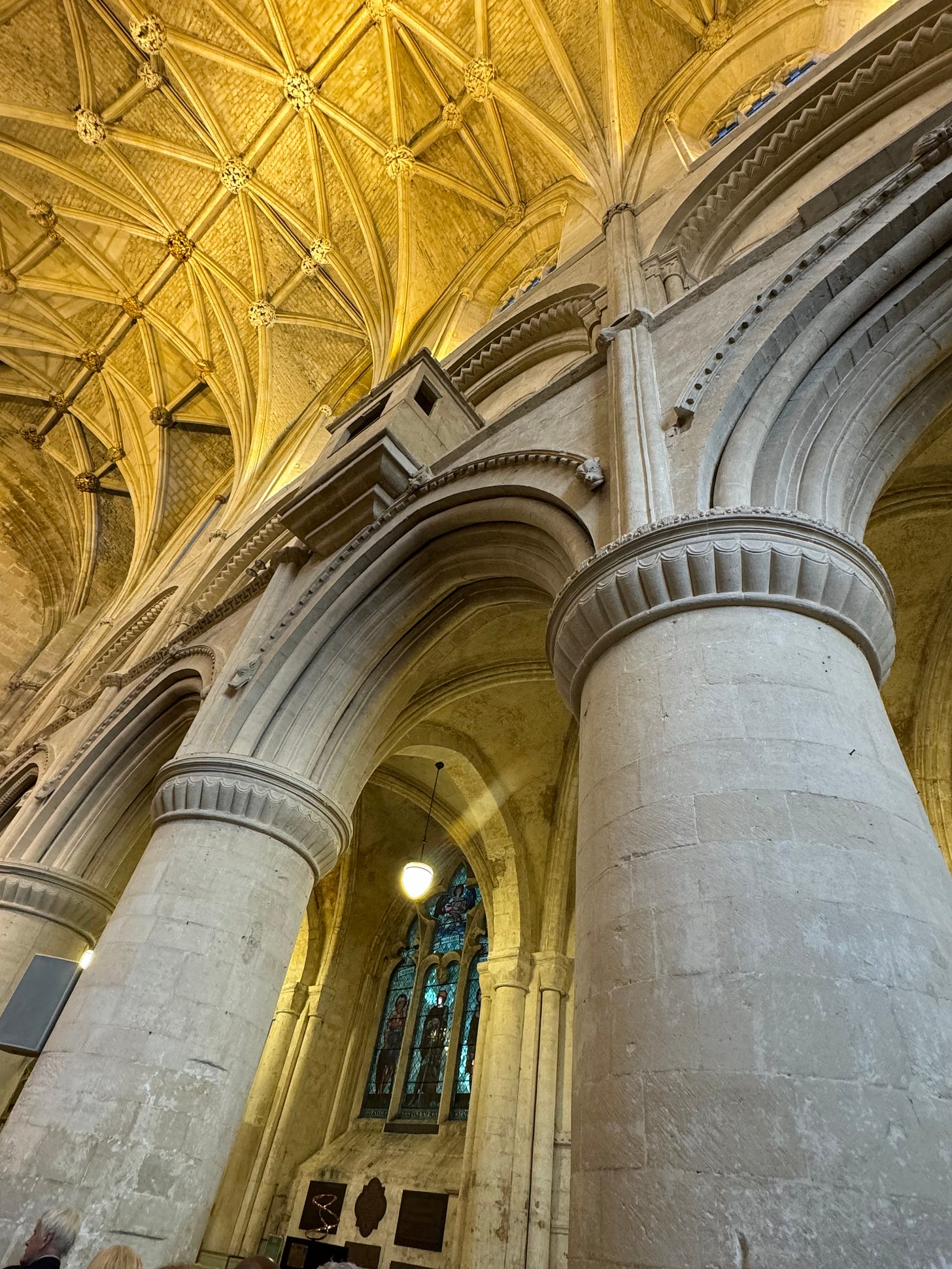by Christine Sine
Yesterday I sat in Malmesbury Abbey looking up at the beautiful old stone pillars and vaulted ceilings. I reached up and ran my hand over the stones that have weathered many a storm since they were built in the 12th century.
“ If these stones could speak I wonder what they would say?” I mused. The whole abbey felt like a thin space, the stonework infused with the myriad of liturgies and songs that have resounded throughout the sanctuary since it was built.
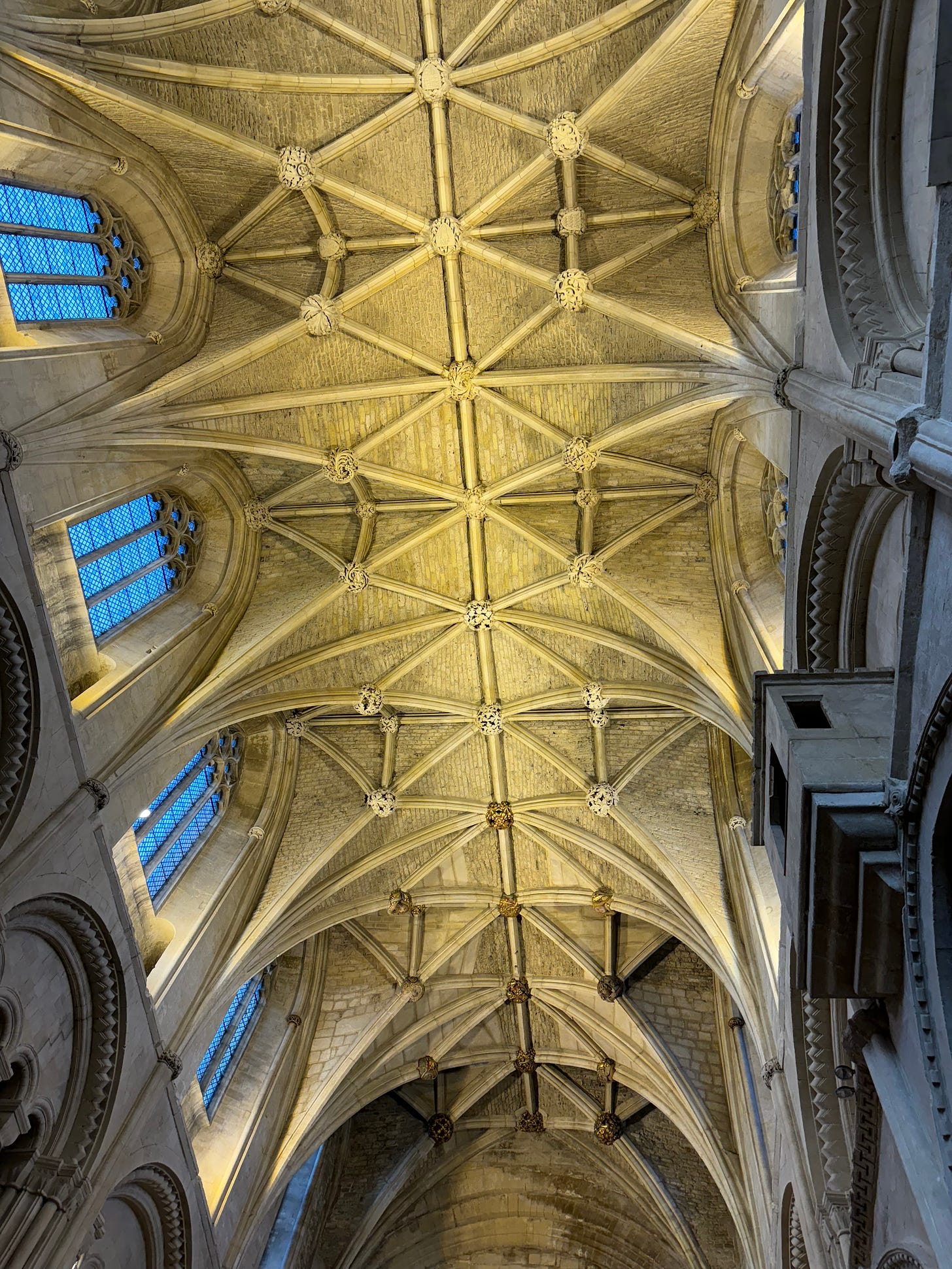
Malmesbury Abbey ceiling
What amazed me was the creative innovation that was a part of this abbey community throughout its life, starting in 675 when the first abbey was built on this site. An abbot named Aldhelm led a small group of monks who worked and prayed and followed the Benedictine Rule while they built. Aldhelm, known as the minstrel monk, was a renown poet, singer, song-writer, traveller, theologian and architect. He was very good at sharing his faith and persuaded townsfolk to worship by singing and entertaining them at Malmesbury’s town bridge. Talk about creative.
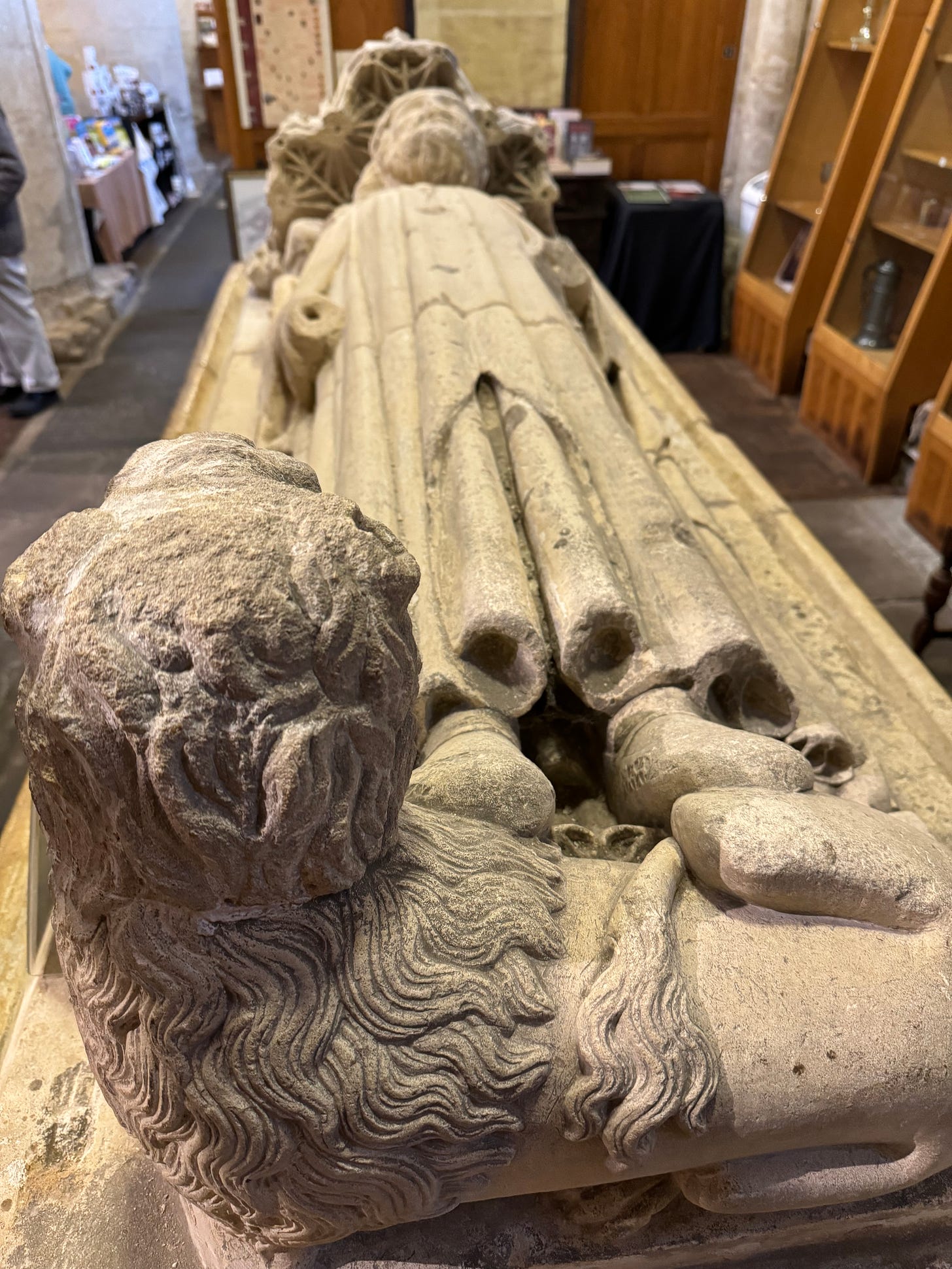
King Athelstan’s memorial
One of the people greatly influenced by St Aldhelm’s teaching was Athelstan, grandson of Alfred the Great, and crowned First King of All England in 937. He commissioned the Gospels to be translated into the vernacular (Old English) so that ordinary people could hear the Good News of God’s love in a language they could understand. He was buried in Malmesbury Abbey and his tomb still attracts pilgrims from all over the world. Wow. How many of us knew that the Gospels were made available to the common people of England so long ago.
At the end of June another innovative endeavour will begin as a new pilgrimage route, which will eventually link all 36 historic Anglican churches in the North Wiltshire Deanery, will be opened. Historian and patron for the Athelstan Pilgrim Way, Tom Holland, host of The Rest is History podcast, champions Athelstan as the greatest of English monarchs. He comments:
Pilgrimage, and with it an embodied prayer life, both of which we know Athelstan pursued, were an expression of that profoundly felt need for spiritual succour and direction. We’ve lost something of the language for it today, but I’m excited as Patron to support this modern endeavour to rediscover the significance and resonance of pilgrimage. across Wiltshire field and track, may following in his footsteps because pilgrimage indeed.
Stone pillars Malmesbury Abbey
I think that the resonance of pilgrimage hums within the walls of the Abbey and the other churches that date back a thousand years into the past. If the walls could speak they would speak of wars and plagues and disagreements but even more loudly of strong faith, life giving spiritual rhythms, the incredible love of God and a spirituality that changed the lives of so many across this country and around the world.
Can you imagine the impact the communities of faithful people who have worshipped here have had? There is still a Community of St Aldhelm, established in 2016, who seek to follow God more closely by keeping a Rule of Life based around a rhythm of Daily Prayer. Members try to be intentional about setting time aside for spiritual reflection, together and separately and explore together what it means to live more fully as a community even though they aren’t living together in a community house.
Alone we can do little but together, across time and space we can change the world.
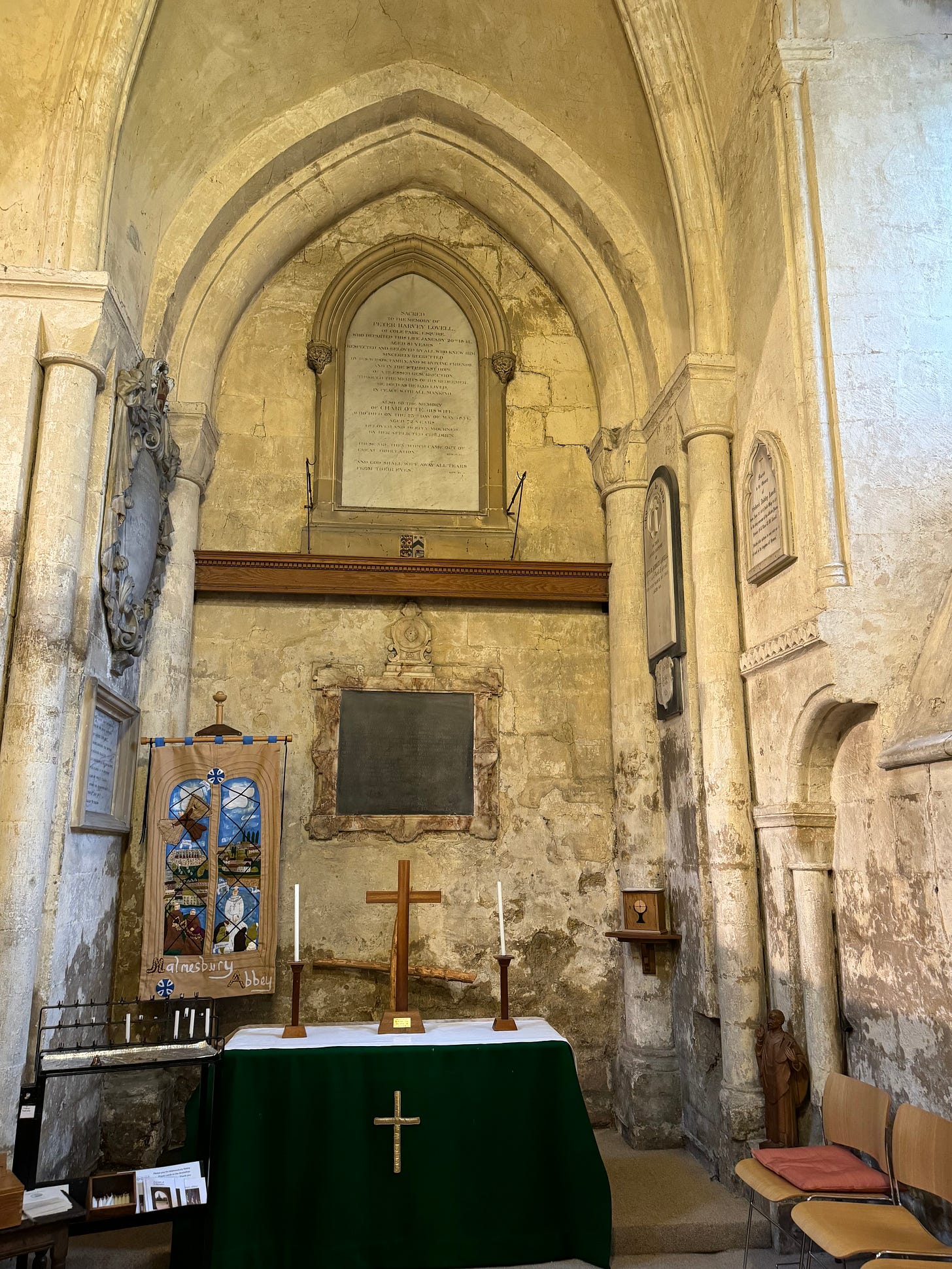
Side chapel Malmesbury Abbey
St Aldhelm’s Blessing
Therefore let us all, snatched from danger,
give thanks with gratitude to Christ who reigns forever.
Glory be to the unbegotten God,
and to the begotten Son
together with the Holy Spirit
ruling all ages beyond;
The blessing of God Almighty,
the Father, the Son and the Holy Spirit,
be among you and remain with you always.
Amen

